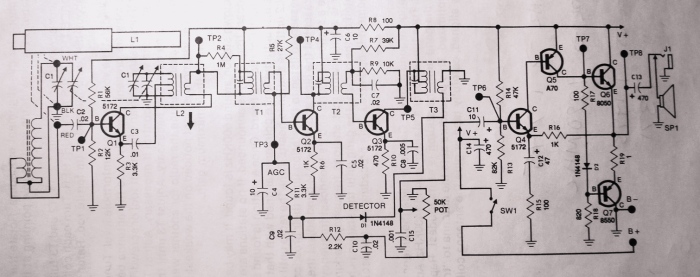Follow along with the video below to see how to install our site as a web app on your home screen.
Note: This feature may not be available in some browsers.

Why do you ask? The test points are on the schematic of the simple AM radio in post #3.Very thanks for your useful answers.special tanks to ronsimpson for his great modulations animation.So, in fact,if I want to localize points of a receiver in which we can see a reasonable
signals , which points are there?
Could you please get me those points even at a typical receiver block diagram ?
wow, that's a pretty cool kit. i ought to get one for my youngest son. who makes that?Here is a learning kit radio. The top half is FM and the bottom is AM.
"IF" is intermediate frequency. One of the pins on the metal can should have 455khz with audio. You might see it on the Collector pin of the transistor. (very small signal)
View attachment 112360
Thanks for the Likes!
wow, that's a pretty cool kit. i ought to get one for my youngest son. who makes that?

